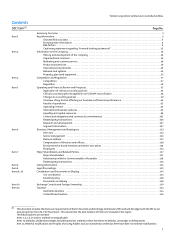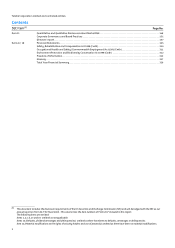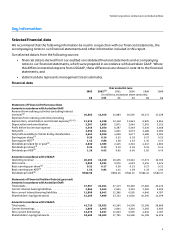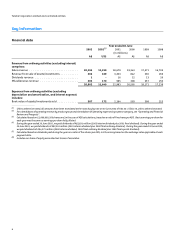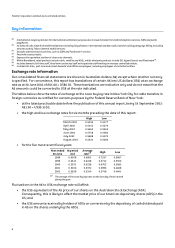Telstra 2002 Annual Report Download - page 14
Download and view the complete annual report
Please find page 14 of the 2002 Telstra annual report below. You can navigate through the pages in the report by either clicking on the pages listed below, or by using the keyword search tool below to find specific information within the annual report.
11
Telstra Corporation Limited and controlled entities
Key Information
Furthermore, the Commonwealth currently owns 50.1% of our issued shares and will continue to have a
controlling interest in us. So long as the Commonwealth owns a majority of our shares, it will have the right
under our constitution to decide any matter requiring approval by the holders of a simple majority of the
issued shares, including the election of directors, with the exception of matters upon which the
Commonwealth is not permitted to vote under the Australian Corporations Act 2001 (Cwth) (“Corporations
Act”) or applicable ASX Listing Rules.
We are required to incur new debt in order to undertake expansion and develop our business, and we may be
unable to obtain future financing at favourable rates
Because the Telstra Act requires that the Commonwealth own at least 50.1% of our shares, we are not able
to sell new shares in order to raise capital to fund acquisitions, expand and otherwise develop our business
unless the Commonwealth Government increases its shareholding on an equivalent pro rata basis.
Therefore, we usually need to obtain additional capital financing via debt or other non-equity instruments,
principally by borrowing money from banks or selling bonds to investors. Incurring additional debt to raise
capital increases the amount of interest we are required to pay, which increases overall expenses and
negatively affects our profits.
In recent years the telecommunications industry has generally seen a substantial increase in gearing and
downgrading of ratings, in many cases spurred by purchases of third generation mobile licences and other
acquisitions. This has led to cautionary warnings by a number of major central banks against an over
exposure to the telecommunications industry by banks. As a consequence, the availability of funding for
the telecommunications industry has contracted and the price (margin) has increased. Although many of
the concerns affecting European telecommunications companies do not directly apply to us, in the future,
banks may be unwilling to lend money to us at rates we consider favourable. Furthermore, the interest rates
required by lenders on new debt may rise to compensate for the increased size and risk associated with debt
securities in the telecommunications sector generally. If we are unable to borrow the amounts we need at
affordable rates, it may restrict our ability to pursue our business strategies and adversely affect our ability
to finance our operations.
Fluctuations in currency exchange rates may adversely affect our results
Because we have made several international investments and have substantially expanded our operations
outside Australia, movements in the exchange rates of the Australian dollar against other currencies could
affect adversely our revenues, operating results and translation value of overseas investments. A rise in the
value of the Australian dollar relative to other currencies in which we operate or have made investments
would reduce the relative value in Australian dollars of our revenues, dividends, or assets in those countries
and therefore, may adversely affect our operating results or financial position.
In addition we have raised, and may raise in an increasing proportion in the future, financing in currencies
other than the Australian dollar, principally the Euro. Accordingly, the value of those liabilities will be
affected by the fluctuations of the Australian dollar against the currency in which the financing is
denominated. Generally, we swap foreign currency borrowings into Australian dollar equivalents at
drawdown and through to maturity in order to remove foreign exchange risk. There are exceptions such as
where the funds obtained are used for investments denominated in a foreign currency. In these cases the
borrowings are left in the currency of the investment to act as a natural currency hedge.
However, we can give no assurance that we will be successful in managing foreign currency risk exposure.
More information on our exposure to risk from foreign currency exchange rate fluctuations is provided in
“Quantitative and Qualitative Disclosures about Market Risk”.


